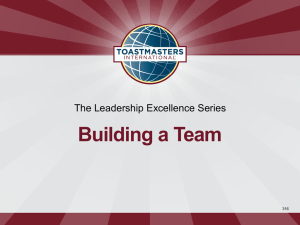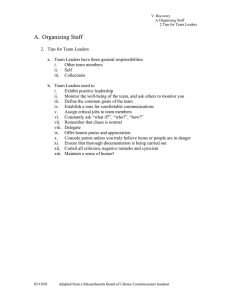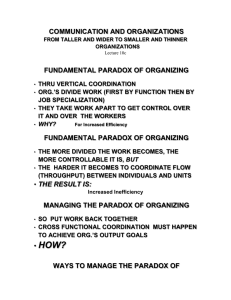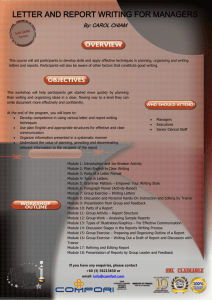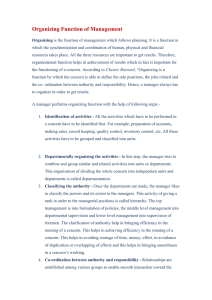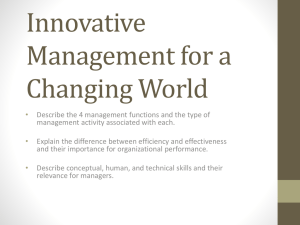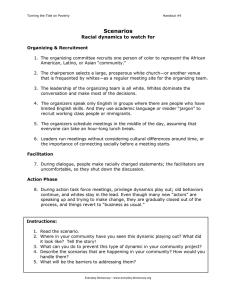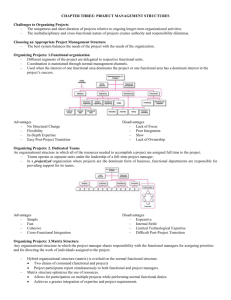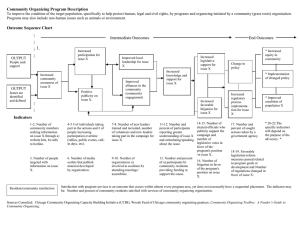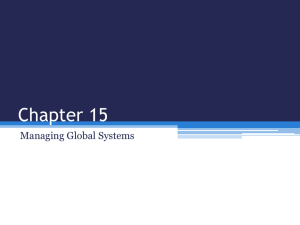6 meeting - Innovative organizing
advertisement
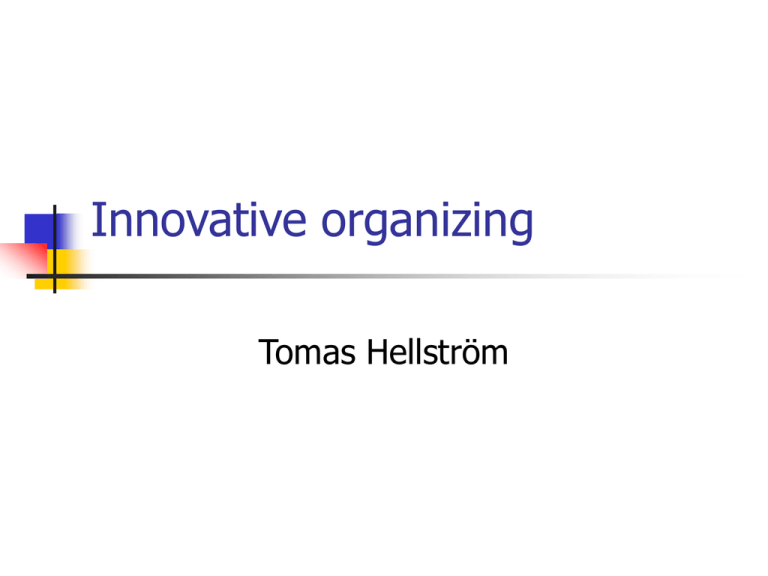
Innovative organizing Tomas Hellström Innovative organizing – What is it? ’Not traditional, big-business’ organizing ’Takes a different kind of leader to start a new activity than to run an old one’ Another kind of drive or motivation? Other values? Other loyalties? Behaviors? Shared vision, leadership and will to innovate Requires energy to overcome inertia and determination to change the order of things (e.g. NIH, core rigidities etc.) Identification and interpretation of weak, potentially disruptive signals Ability and will to help people with ideas and keep them around Able to articulate vision so as to change mindsets and (re)focus energies Shared vision, leadership and will to innovate, cont. Long-term management commitment to projects. Acceptance of risk and uncertainty ”Top-management commitment does not always mean being active agents present in the venture” Creating appropriate organizational structures Not as simple as ’programmed’ vs. ’nonprogrammed structures Innovation and entrepreneurship include corporate wide tasks (production, marketing, administration, purchasing etc.) From differentiation to ’de-differentiation’? Informal coordination mechanism for knowledge integration (brokers, quasi markets, boundary spanners, parallell working, etc). Creating appropriate organizational structures, cont. Mintzberg’s entrepreneurial organizations: simple structures (Apple in the early years) and adhocracies (NASA) Stimulate ’network organizations’ (clustering, learning clubs, cooperative supply-chains, NPD consortia) to promote ’collective efficiency’ and ’technological learning’ Note that issues of risk sharing, locus of decisions, conflict resolution and knowledeg capture must be addressed by through network governance. Stretching training and development Beyond training for processes and equipment Takes the role as motivator – A source of personal value Incentive to take ove the role of money or even promotion to power Opportunity for empowerment From know-how to know-why Stimulates the ’habit of learning’ (e.g. LO) High involvement in innovation Ideas of improvements from the whole of the organization can increase efficiency and lead to new products Sustained incremental problem solving among highly involved staff (Kaizen) Grassroot involvement increases the transferability of ideas in the company ’Policy deployment’ – connecting high-level strategic goals with specific tasks and targets that individuals can engage in (in a ’cascade process’) Creative climate Everyone posesses creativity, but the style of expressing it varies Great inventions matters, but everyday hundreds of small problems must be solved creatively for a new innovation to take form Creativity can be learnt through exercises and games
